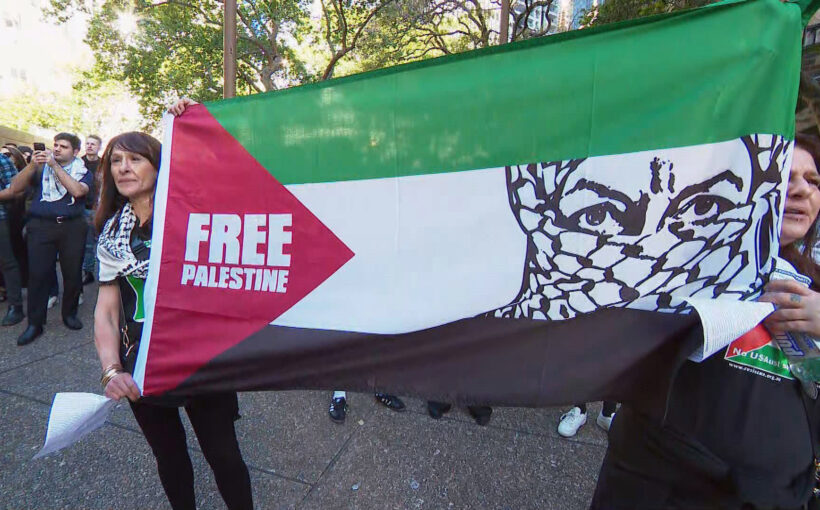Though it’s happening thousands of miles away, the Israel-Gaza conflict has aggravated tensions in the UK. In London, authorities have recorded a 1,353% increase in antisemitic offences and a 140% increase in anti-Muslim offences during October compared to last year. In this emotionally charged environment, police have faced immense pressure to address hate crime, including by making arrests at protests.
Over the last few weekends, more than 100,000 people have attended pro-Palestinian demonstrations. There has been a heavy police presence, and at least nine people have been arrested. At a recent protest, police arrested three people for “racially aggravated offences”.
London’s Metropolitan police faced particular criticism for not arresting a man who was recorded chanting “jihad” at a demonstration. Director of public prosecutions, Mark Hill KC, stated that such an incident was not automatically a hate crime. Senior officers explained further that this is because the word jihad can “mean a lot of things to a lot of people”.
Met commissioner Mark Rowley has said the force is policing within the confines of the law. But the law on hate crimes is extraordinarily complicated – so much so that even the police are expecting the government to clarify it.
What is the law on hate crime, and when does it apply?
When it comes to speech and placards displayed at a protest, prosecuting a hate crime is a highly complex process.
Hate crimes involving racist or anti-religious language expressed in (non-online) public spaces are typically prosecuted in one of two ways. The first is a two-stage process, using a combination of provisions under the Public Order Act 1986 and the Crime and Disorder Act 1998.
Under one section of the Public Order Act, an offence is committed where a person uses words (either verbally or in writing) or exhibits behaviour that is deemed “threatening, abusive, or insulting” and intends to cause a person “harassment, alarm or distress”.
The words “threatening, abusive, or insulting” are not defined in the act, so it is up to a magistrate or jury to determine whether the speech in question reaches the threshold for any of those words. Some limited guidance has emerged from the court of appeal, which has suggested that even “annoying” or “rude and offensive” behaviour may not necessarily amount to something “insulting”.
Even if the accused’s expression meets the threshold, a conviction could still be challenging in the context of a large protest. The law states that the speech must be targeted at a specific individual, who as a result feels harassed, alarmed or distressed.
Prosecutors could turn to a different section of the law, which has a narrower definition in that the language used must be either “threatening or abusive” – not merely “insulting”. However, it is broader in that the prosecution needs only prove that the incident occurred “within the hearing or sight of a person likely to be caused harassment, alarm, or distress”. Given that protests are public events where the purpose is for others to hear what is being said, this requirement is more likely to be satisfied.
If there is enough evidence for an offence to fall under either of these sections, the prosecution must then assess whether the offence could be “racially or religiously aggravated”. They do this by applying separate provisions set out in the Crime and Disorder Act. This law requires that the offender either demonstrated, or was (wholly or partly) motivated, by “hostility” based on the victim’s (presumed) membership of a racial or religious group.
The term “hostility” is not defined in the law, and again is a question for a magistrate or jury to determine. The Crown Prosecution Service (CPS) applies a broad definition of hostility when preparing evidence for prosecution, which includes “ill-will, ill-feeling, spite, prejudice, unfriendliness, antagonism, resentment, and dislike”.
The challenge of prosecuting racial hatred
The other possible route to prosecution would require proving that a person used speech or writing that “stirs up racial or religious hatred”.
This differs from the above in that the prosecution need only refer to one piece of legislation. For example, under section 18 of the Public Order Act, a person commits the offence of “stirring up racial hatred” where they use “threatening, abusive, or insulting” words, behaviour, or written material and either “intend” to stir up racial hatred, or understand that in the circumstances, it is “likely to be stirred up”.
Hatred is not defined in law but is generally considered by the CPS to be a very strong emotion. It is likely that stirring up racial tension or even provoking hostility towards a racial group is not enough to proceed with a case.
The CPS must also gain the consent of the attorney general to prosecute such cases. For these reasons only a handful of cases reach court each year.
Freedom of expression
In all criminal cases, prosecutors must consider whether it is in the public interest to bring the case to court.
This includes considering whether prosecution would violate the accused’s freedom of expression rights, protected by the European Convention on Human Rights. This right is often considered alongside a defence, provided for some of the offences considered above, that their conduct was “reasonable”. Context is key, and the fact that an individual is participating in a protest (also a protected right) will also need to be considered.
Given the complex web of provisions required to bring a case to court, the law on hate crime could certainly be improved. But, ultimately, the accused’s human rights must be weighed against the state’s responsibility to confront harmful instances of prejudice and hatred. This will always be a complicated – but crucial – balance.
![]()
Mark Walters does not work for, consult, own shares in or receive funding from any company or organisation that would benefit from this article, and has disclosed no relevant affiliations beyond their academic appointment.



